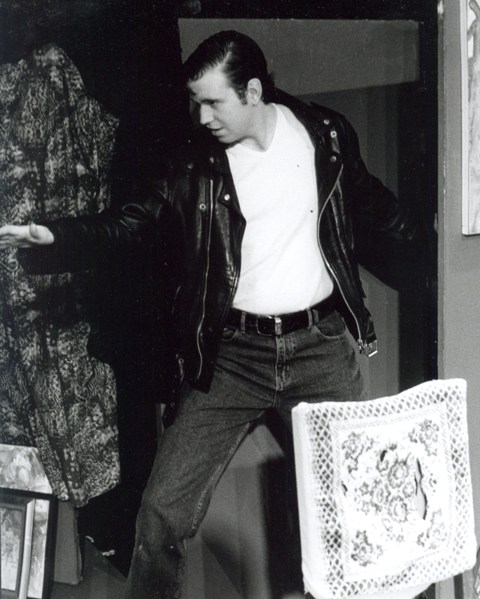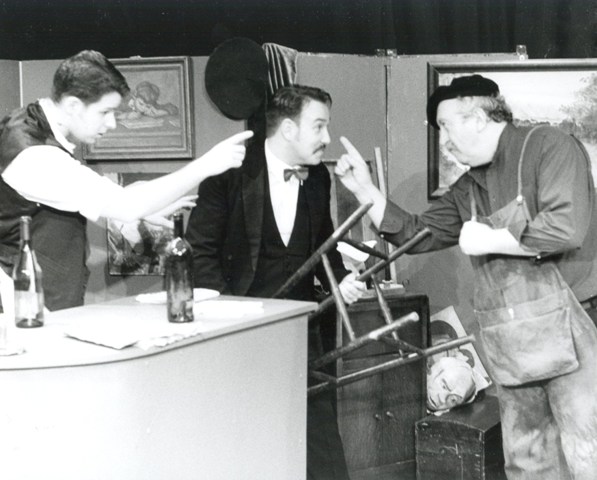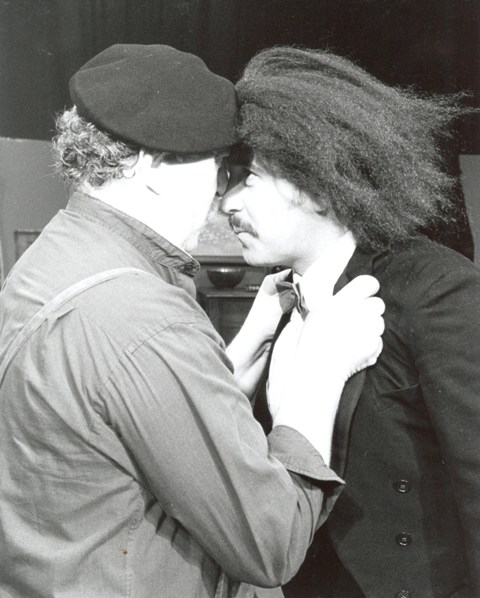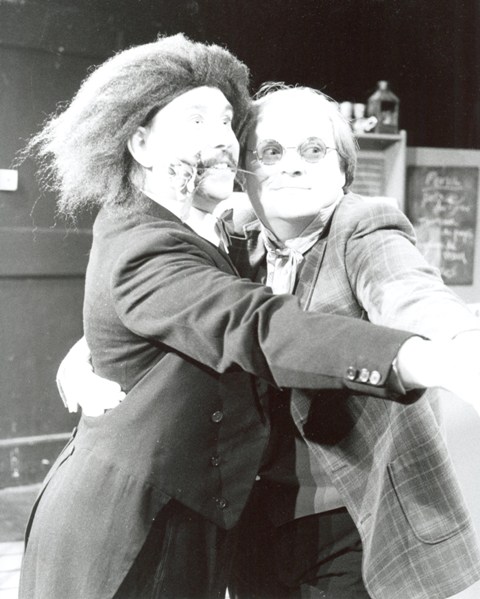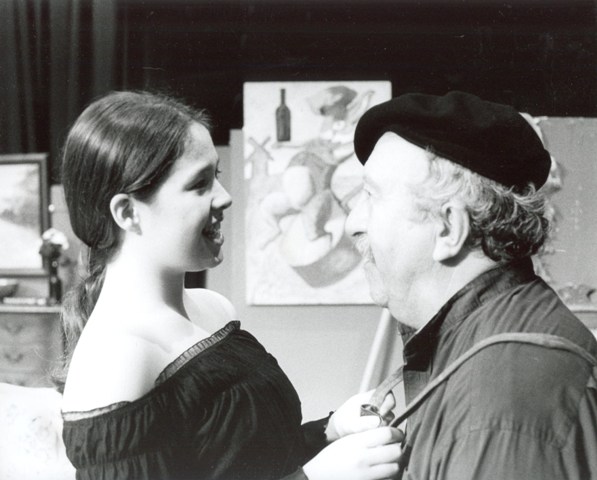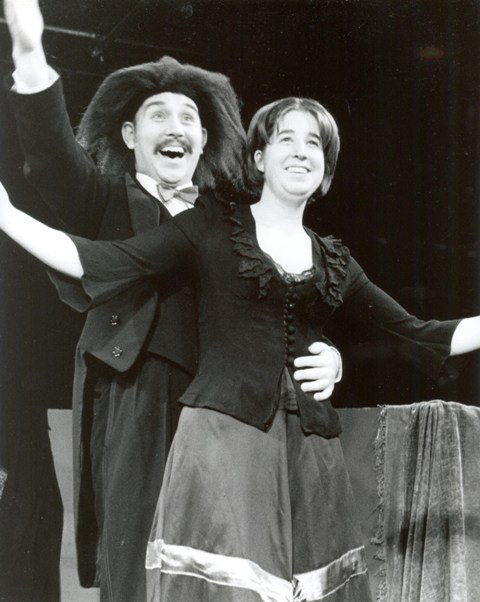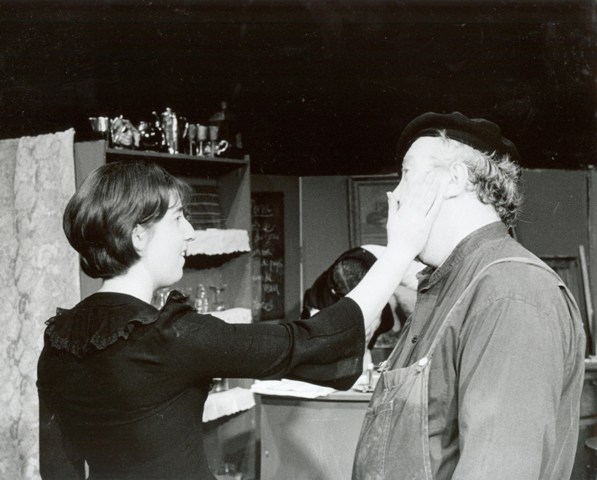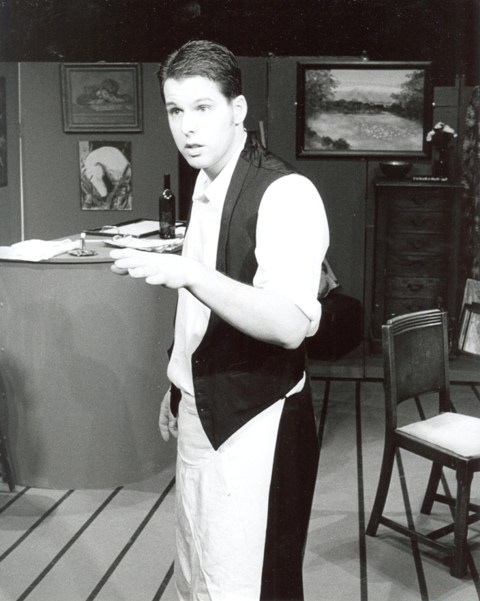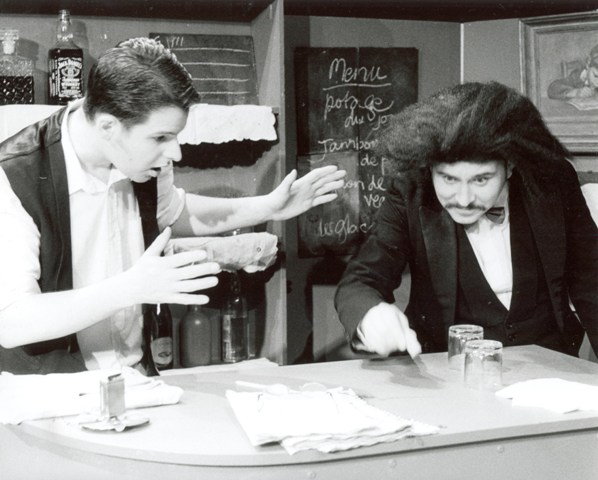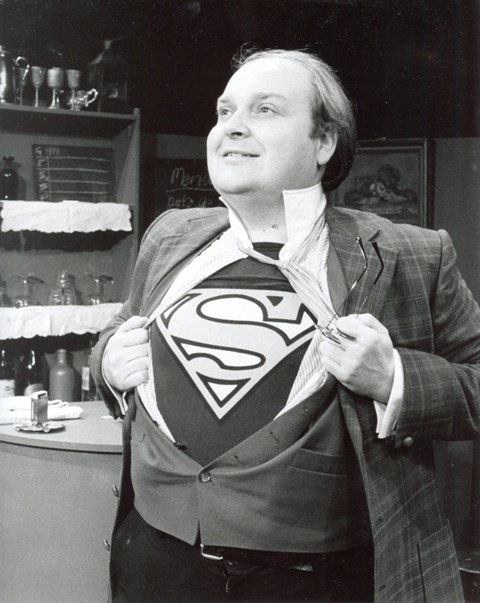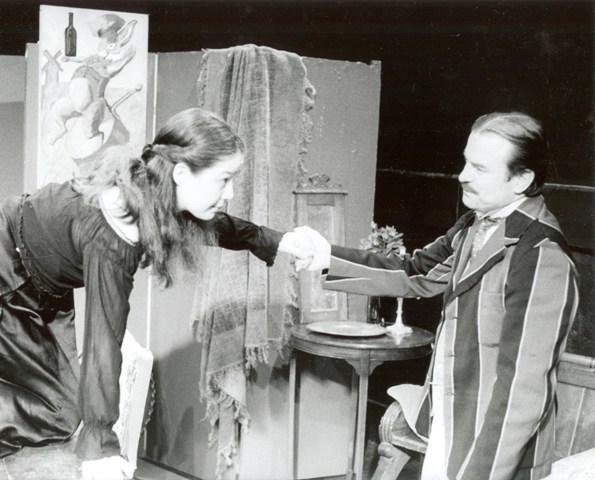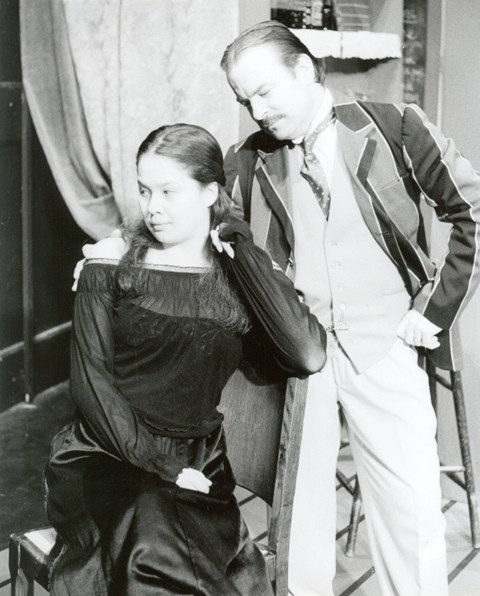The Bench Production
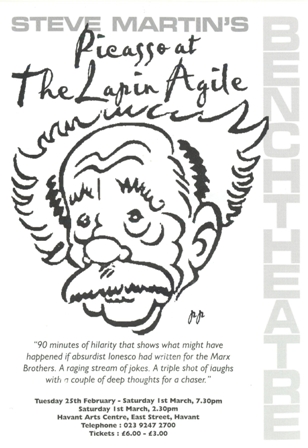
This play was staged at Havant Arts Centre, East Street Havant - Bench Theatre's home since 1977.
Characters
| Freddy | Richard Le Moignan |
| Gaston | Peter Corrigan |
| Germaine | Vicky Hayter |
| Einstein | Neil Kendall |
| Suzanne | Francine Huin-Wah |
| Sagot | Simon Walton |
| Picasso | Martin McBride |
| Schmendiman | Mark Wakeman |
| Countess | Francine Huin-Wah |
| Female Admirer | Francine Huin-Wah |
| Visitor | Nathan Chapman |
Crew
| Director | Damon Wakelin |
| Producer | Nicola Scadding |
| Stage Managers | Liam Penny Susie Borton Ruth Prior Paul Davies |
| Lighting Design | Damon Wakelin |
| Rehearsal Photography | Darryl Wakelin |
| Production Photography | Bill Whiting |
| Programme Design | Derek Callam |
| Costumes | Alice Corrigan |
| Picasso Reproduction | Jo Tester |
| Set Design | David Penrose |
| Set Construction | Derek Callam David Penrose |
| Front of House | Andrew Caple |
Director's Notes
Much of what occurs in Steve Martin's inventive comedy is based in reality, yet it owes much of its appeal to the author's many flights of fancy.
So what is real?
Clearly Einstein and Picasso are real, both are icons of the twentieth century and both are acknowledged as being responsible for helping to shape our modern age, indeed for defining our very perceptions of science and art. This forms the intellectual and theoretical core of the play as Martin explores the notions of art as science and science as art, not to mention the intrinsic nature of genius.
Beyond these two there is a good deal of truth in the structure of the play. The Lapin Agile was, still is, a real bar in the Montmartre district of Paris and Picasso really did drink there. Indeed, Picasso painted the bar, (and I don't mean a nice Magnolia with rag-roll effect), and many of its regulars feature in his work. The barman, Freddy in the play. Freddy in reality, for instance, is seen playing the guitar in Picasso's "Au Lapin Agile".
Clovis Sagot was genuinely an art agent responsible for promoting much of Picasso's work and, in his earlier life, a clown in the circus! Germaine is based on a real life friend of Picasso's, Germaine Gargallo, who sat for at least half a dozen paintings and was herself a regular at the Lapin Agile. And Suzanne is based on Fernande Olivier, Picasso's lover for 8 years. The two of them met in August 1904 and it is this relationship that is widely held to be responsible for Picasso's shift from his Blue to his Rose periods.
The mysterious visitor who arrives as the third point of the triangle is also a real person, although to reveal who that person is would be to surrender the element of surprise they represent!
And the flights of fancy?
Well, it is impossible that the visitor could be in Paris in 1904, (you'll have to trust me on that one until you see the show!), and of course Einstein and Picasso never actually met. Indeed, there is no evidence to suggest that Einstein ever visited the Lapin Agile or that he had a glamorous female benefactor around 1904.
And the other characters? The Female Admirer appears to be no more than a future echo of the fanatic/groupie phenomena Martin would have experienced as a late twentieth century movie star; Gaston seems to be an archetypal, even generic, old Frenchman and then there is Schmendiman. Schmendiman is a force of nature, a character that most resembles Steve Martin himself, most especially his earliest stand-up comedy persona.
Martin's sense of the cinematic is also evident with exciting stage directions such as "the roof folds back to reveal a starry sky", as well as breaking the theatrical fourth wall convention on a number of occasions and allowing for addresses direct to camera, as it were.
Damon Wakelin
Reviews
The NewsMike Allen
Production represents a bold and successful step
What time will you be there? "When the play's over, of course" says the young Pablo Picasso. And he means this play. There, in a nutshell, is the surreal aspect of American Steve Martin's 90-minute comedy. The other aspect is more difficult to sum up, but it's to do with art and science, genius and relativity. Relativity? Yes, because the play, set in a Paris bar in 1904, brings together Picasso and Albert Einstein.
The Production represents another bold and successful step by the enterprising Bench Theatre. David Penrose's set catches the essential bohemian flavour of the Lapin Agile bar, and director Damon Wakelin has encouraged his cast to play big while allowing for more reflective moments.
The one exception among the major roles is Martin McBride's low-key Picasso, played as a cockney spiv. This is not a convincing interpretation. But at least it counterpoints Neil Kendall's brilliantly explosive Einstein, as wild-eyed as he is wild haired, and the even more outrageous antics of Mark Wakeman as the exhibitionist Schmendiman. Nathan Chapman arrives late in the interval-free play to give a presentable impersonation of a mystery 'third man' of genius. But best of all is Peter Corrigan as a beret-wearing Gaston - gruffly lecherous, willing of spirit, weak of flesh. Until Saturday.
The News, 26th February 2003
